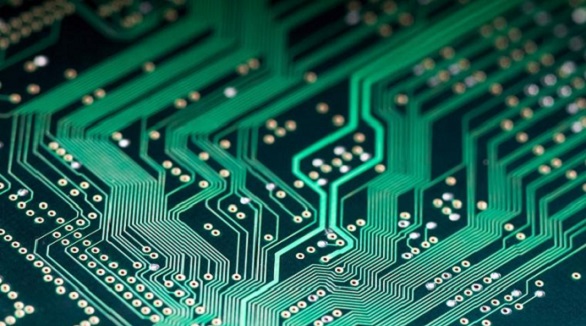Wave Soldering
Wave soldering is a PCB assembly process that moves the board over a molten solder wave to create reliable connections. Evolving from dip and drag soldering, it offers consistent, high-quality solder joints. Despite its complexities, it remains essential for through-hole components and complex PCB assemblies.
What is Wave Soldering?
Wave soldering is a process in the assembly of printed circuit boards to create a reliable connection between component leads and board circuitry. The principle is simple: The entire assembly is moved by a conveyor over a bath of molten solder after components are placed on a PCB with their leads inserted into "through-holes" drilled or punched through the board. A pump forces the solder through a chimney to form a wave or ridge that flows across the bottom of the PCB. This wave of solder establishes the connections between the component leads and circuitry on a PCB.
While conceptually very simple, wave soldering is a complicated process that demands control of many variables if defects are to be avoided and solder-joint quality maintained.
Evolution of Wave Soldering
The electronic assemblies were vastly different before the 1950s. Components known as vacuum tubes, resembling incandescent light bulbs with added electrodes, were the sparse components of the assemblies back then. These tubes would be plugged into sockets mounted on a supporting plate, with wires manually soldered to socket tabs to create circuits.
Everything changed with the invention of solid-state components and PCBs in the 1950s. Early boards had single-sided designs with metal tracks or traces that formed the circuitry required by the design. These tracks took the place of the wiring for the vacuum tubes, and the leads of components were placed into holes drilled through the board, with the solder making the electrical connections.
Tracks were initially very large, but as technology improved and tracks became narrower to allow for more circuitry, extra metal "lands" (or "pads") were placed around through holes to provide a reliable solder connection.
PCBs grew increasingly complicated over time. Double-sided PCBs were created as a result of technologies like "plated through-holes," which made it possible to use circuitry on both sides of the board. Further developments produced multilayer PCBs that had internal tracks, and hybrid assemblies used both through-hole and SMT devices. Even flexible circuit boards appeared as ribbons. These innovations introduced new challenges for wave soldering, which called for ever more complex machinery. However, wave soldering started with these simpler, earlier PCBs.
Development of Wave Soldering Methods
First: Dip Soldering
The first PCBs were soldered by hand, just like vacuum tube assemblies. Noting that all the solder points were on one flat plane, innovators set about finding a soldering technique that could deal with all the leads at once. The first try was "dip soldering," where a fluxed assembly was placed flat on a pool of molten solder. It turned out to be a somewhat problematic method: incomplete connections, webbing, spikes, and shorts, and it was dirty, hot, and hazardous.
Second: Drag Soldering
The next iteration was "drag soldering," an automated version of dip soldering with a conveyor moving the assembly over the solder pool. It improved efficiency and safety but still had some problems, among which were inconsistencies in solder connections caused by PCB sagging and many imperfections in the solder bath.
Third: Wave Soldering
Finally, many problems associated with dip and drag soldering were overcome by the wave soldering process. In this process, a PCB is passed over a flowing wave of solder that results in more consistent and reliable connections. The process minimizes flux entrapment and solder oxide defects while ensuring uniform solder coverage.
Wave Soldering Process Modern
Wave soldering has played a huge role in fabricating PCBs, particularly through-hole assemblies. While it has been adapted for surface mount devices, it remained best suited for through-hole components. State-of-the-art wave soldering systems use advanced controls and automation to handle the numerous variables that can affect soldering quality, from the speed of the conveyor to the temperature of the solder, wave height, and flux application.
Conclusion
Wave soldering has been one of the cornerstones of today's PCB assembly, offering efficient and reliable solder connections for complex electronic assemblies. Its development from dip and drag soldering attest to the continuous innovative struggle to meet increasing demands that characterize the history of PCB technology. Presently, wave soldering is still of great importance in the manufacture of robust, high-quality electronic circuits.
Hot Tags:
Contact us

If you can't find what you're looking for, please contact us.
Article

Selecting the right PCB surface finish, from options like HASL, ENIG, ENEPIG, and OSP, is crucial for preventing oxidation, ensuring solderability, and meeting reliability standards.

Plated half-holes allow for high-density, miniaturized electronic connections with ease of soldering and efficient board integration—two of the basic needs of modern PCB designs and applications today, such as WiFi modules.

The trend towards lead-free PCB manufacturing comes due to the EU's ROHS directive, which requires compliance to the limits on the content of lead. Compliance with lead-free is achieved by different surface finishes such as ENIG, ImAg, ImSn, and OSP—all with their different pros and cons. This paper compares these finishes to help choose the best for specific PCB applications.